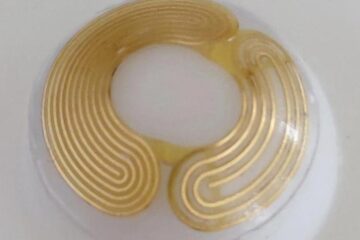Researchers discover a good side to cholesterol in controlling cell signals

Cholesterol, often stigmatized for its role in heart disease, has long been known to be essential for the health of the fat-laden membranes that surround individual cells. New findings by researchers at UT Southwestern Medical Center highlight a novel role for cholesterol inside the cell itself – anchoring a signaling pathway linked to cell division and cancer.
These findings appear in the March 4 issue of Science and are available online. “Cell signals have to be tightly controlled,” said Dr. Richard G.W. Anderson, chairman of cell biology and senior author of the study. “If the signaling machines do not work, which can happen when the cell doesn’t have enough cholesterol, the cell gets the wrong information, and disease results.”
The cell membrane, which is fluid in nature, contains cholesterol. Dr. Anderson’s research focuses on regions of the membrane where cholesterol is enriched. These regions, called lipid domains, are more rigid than the rest of the cell membrane because of cholesterol and play a critical role in organizing signaling machinery at the cell surface. The correct arrangement of signaling modules in these domains is vital for communication inside the cell and is dependent on proper levels of cholesterol.
While studying how cholesterol moves to the membrane to get to lipid domains, Dr. Anderson, who holds the Cecil H. Green Distinguished Chair in Cellular and Molecular Biology, and colleagues found that cholesterol can work outside the membrane to regulate a key signaling pathway that occurs inside the cell. Through an interaction with a protein called the oxysterol binding protein (OSBP), cholesterol holds together a group of enzymes that deactivates extracellular signal-related kinase (ERK). Overactive ERK is associated with multiple cancers.
When the amount of cholesterol in lipid domains is normal, the OSBP-cholesterol complex keeps the amount of active ERK under control. When cholesterol in the domains gets too low, however, the complex falls apart, leading to abnormally high levels of active ERK.
Dr. Anderson and colleagues noticed that OSBP has binding sites for both cholesterol and the other proteins in the complex. They believe that when cholesterol binds OSBP it changes shape to bind the key enzymes in a way that allows them to work together to control deactivation of ERK. When lipid domain cholesterol gets low, OSBP loses its cholesterol and no longer is able to bind the enzymes that deactivate ERK, keeping it active.
“OSBP appears to work like a cholesterol-regulated scaffolding protein that controls a key signaling pathway,” Dr. Anderson said “This work shows a new way that lipids can regulate key signaling pathways and raises the possibility that other lipid regulated signaling scaffolds can malfunction in other diseases.”
Other UT Southwestern contributors to the study were Dr. Jian Weng, assistant professor of cell biology, and Dr. Ping-Yuan Wang, postdoctoral researcher in cell biology and lead author.
Media Contact
More Information:
http://www.utsouthwestern.eduAll latest news from the category: Life Sciences and Chemistry
Articles and reports from the Life Sciences and chemistry area deal with applied and basic research into modern biology, chemistry and human medicine.
Valuable information can be found on a range of life sciences fields including bacteriology, biochemistry, bionics, bioinformatics, biophysics, biotechnology, genetics, geobotany, human biology, marine biology, microbiology, molecular biology, cellular biology, zoology, bioinorganic chemistry, microchemistry and environmental chemistry.
Newest articles

‘Smart’ contact lenses could someday enable wireless glaucoma detection
Most people with early-stage glaucoma don’t know they have it, even though early treatment is key to reducing vision loss. While detecting a subtle increase in eye pressure helps doctors…

New tech may lead to smaller, more powerful wireless devices
Good vibrations… What if your earbuds could do everything your smartphone can do already, except better? What sounds a bit like science fiction may actually not be so far off….

Caution, hot surface!
An international research team from the University of Jena and the Helmholtz Institute Jena are demystifying the mechanisms by which high-intensity laser pulses produce plasma on the surface of solids….





















